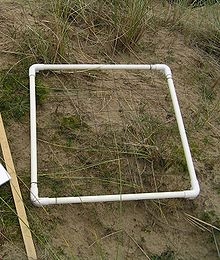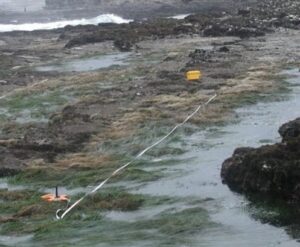Investigating Populations
Introduction
Quadrats
Transects
Recording Data
Mobile Species
Introduction
Where do you even begin to count the number of organisms in a field, for example? How can quantitative data be obtained for a rocky shore? It’s not feasible to assess every single individual plant, count all the crabs you can possibly find, or estimate the abundance of all types of grass along a shingle ridge. Even if that was possible, the data would still not apply to the make up of a population, for example, at different times.
The answer is to obtain a sample. If a sample of crabs on a shore was to be taken, where would you look? In the spot where you can already see 3 of them, or in the spot where there are none? Well, in order for the sample to be representative, you must not involve yourself, as the experimenter, in the process of deciding the sample locations. That would incur experimenter bias and would render you hard-earned precious data invalid.
Quadrats
The sampling must be like those annoying, attention-seeking TikTok friends. It must be random. Random sampling can be carried out using quadrats. If you’re wondering what they are, look no further – they’re squares.

How would you make sure that your sampling is random? In a field, you could lay two long tapes perpendicularly to define the limits of the area where the samples will be taken from.

As you can see above, a tape is laid on one side of the sampling area. As you can’t see above, another tape is laid from one end of the first tape, across on the adjacent side of the sampling area (like a giant L). Then two random numbers are generated using a random numbers table. These numbers are used to determine the coordinates of the first quadrat placed on the field, by matching them on the two tapes. And voila! You have yourself a system for random sampling using quadrats.
Transects
Transects are tapes (like above) placed across an area which has some form of gradient caused by abiotic factors which directly determines the…..


